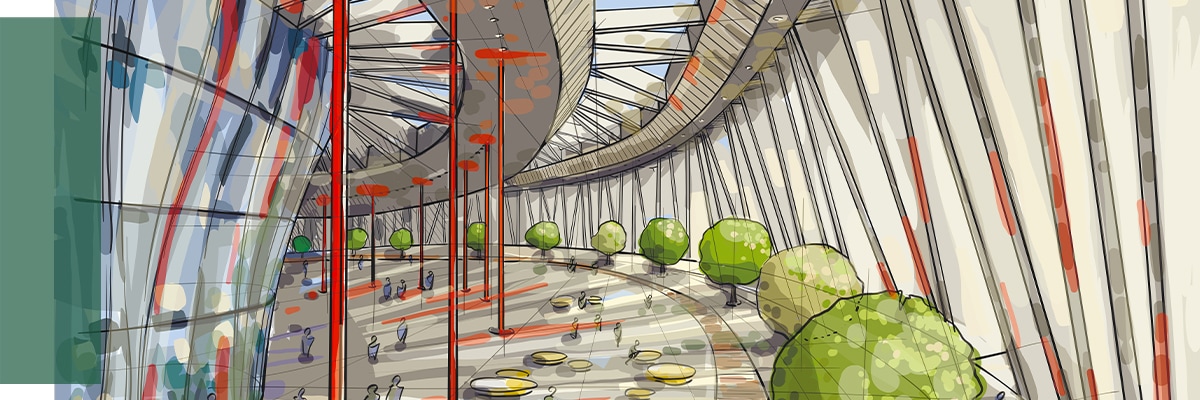Moving Through Space: Transit Hubs Are the New Agoras
Airports, train stations, shopping malls: once considered cold, soulless spaces, they’re now undergoing a radical transformation into artistic and cultural hubs thanks to design, color and changing habits.

Thirty years have passed since 1992, when anthropologist Marc Augé coined the neologism “non-places” to define locations that are devoid of relationships and identity. Decades after his astute observation, something seems to have changed in the way we occupy and experience space.
Places that once were considered empty, soulless containers have instead become beloved places to visit.
Designers were the first to notice the change, observing how, for instance, shopping malls had become the new town squares, gathering places for young people who met there without buying anything. This led to changes in the way the spaces were conceived. They became brighter, more inviting and functional, giving consumers the chance to try different experiences, such as seeing exhibitions, sampling street food, playing the piano and attending a theater performance.

“Perhaps happiness is only to be found in stations?” mused Georges Perec. For those of us with a Vespa soul, who live on the move – constantly seeking out new worlds and embracing comings and goings – the ability to experience airports, subway stations, hotels and shopping malls as living spaces rather than alienating nowhere lands is truly revolutionary.
That’s what the City of Naples wondered, ultimately opening the Stazioni dell’Arte (Art Stations), nine subway stops on Line 1 that are built as museums. For the price of a ticket, you can admire over 200 modern art installations and also swoon over the incredible architecture at the Toledo station, among others.
The Stockholm subway is also a real work of art with its 90 stations embellished with the works of approximately 150 artists. It’s worth taking the time to enjoy this city museum without rushing: after all, the subway in the Swedish capital is rarely crowded.
We would be remiss not to mention New York’s subway, which for many years now has been a gallery featuring permanent works and street art murals (some admittedly unauthorized).
The trend kicked off in the U.S. before reaching Canada, Europe and Australia, making airport waiting areas into galleries.
Consider the private beaches of the luxurious Adam&Eve hotel in Belek, Turkey, or the multi-colored rooms of Rome’s Mama Shelter, and the Marqués de Riscal’s wine-therapy spa amidst the vineyards of Elciego in Spain. Design hotels are on the rise, offering something for all tastes and turning our trips away from home into cozy experiences.
Just remember that what really brings places alive are the dreams of those who go there – our dreams.